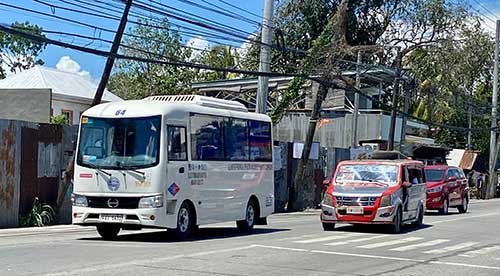
By Joseph Bernard A. Marzan
Despite declines in some key commodity groups, Western Visayas’ inflation rate rose to 4.3 percent in May, slightly up from 4.1 percent in April, according to recent data from the Philippine Statistics Authority (PSA) Region 6.
The 0.2 percent increase from April to May 2024 marks a slower rise compared to the 1.0 percent jump from March (3.1 percent) to April. But the current rate is still lower than the 7.1 percent recorded in May 2023.
This marks the fourth consecutive increase this year, following rises in April, March, and February (2.7 percent), coming from a long-time low in January (2.0 percent).
The highest inflation rates were in education services (7.8 percent) and food and non-alcoholic beverages (7.0 percent).
PSA-6 attributed the overall rise to a slower decline in fuels and utilities and a spike in transportation costs.
The same data indicated that the rate for housing, water, electricity, gas, and other fuels rose from -2.2 percent in April to -0.3 percent in May. Transportation costs increased to 3.8 percent in May from 3.1 percent in April.
Other notable inflation rate increases last month included clothing and footwear at 3.1 percent (from 2.1 percent) and restaurants and accommodation services at 5.5 percent (from 5.4 percent).
Despite the overall rise, some key commodity groups saw small but significant declines:
– Food and non-alcoholic beverages at 7.0 percent (from 7.3 percent)
– Alcoholic beverages and tobacco at 3.7 percent (from 4.8 percent)
– Furnishings, household equipment, and routine household maintenance at 2.3 percent (from 2.8 percent)
– Health at 2.6 percent (from 2.9 percent)
– Recreation, sport, and culture at 3.8 percent (from 4.3 percent)
– Personal care, and miscellaneous goods and services at 2.9 percent (from 3.1 percent)
Education services, information and communication (1.0 percent), and financial services (-1.0 percent) maintained their rates from April.
The food sector, a significant contributor to overall inflation, saw mixed results. While the inflation rate for cereals and cereal products remained high at 15.7%, it marked a slight decrease from April’s 16.0%. The meat sector’s inflation also dropped to 11.2% from 12.5%.
Moreover, certain food categories such as fish, dairy products, and oils saw reduced inflation rates, contributing to the overall deceleration in food inflation.
Breaking down the regional inflation rate per area, Guimaras had the highest rate for May at 7.0 percent, followed by Antique (5.7 percent), Iloilo province (4.7 percent), Aklan and Bacolod City (4.5 percent each), Capiz (4.4 percent), Negros Occidental (4.2 percent), and Iloilo City (1.3 percent).
Impact on Low-Income Households
Inflation for the bottom 30 percent income households in Western Visayas increased to 5.4 percent in May from 5.2 percent in April.
This rise was largely influenced by slower declines in housing, water, electricity, gas, and other fuels (-1.5 percent from -4.6 percent) and transport (1.6 percent from 1.0 percent).
Food and non-alcoholic beverages, although showing a slight deceleration, remain a significant burden at 8.2 percent.
The economic impact on low-income households is profound, as they spend a larger portion of their income on essentials, which are seeing persistent price increases.
Local business owner Jimmy Delgado said rising costs of utilities and transportation are squeezing their margins.
“We hope for more stable prices in the coming months,” he said.




















